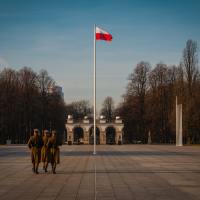
This article is brought to you thanks to the collaboration of The European Sting with the World Economic Forum.
Author: Rob Hope, Director of the Water Security Initiative at the School of Geography and the Environment and Director of the Water Programme. , Smith School of Enterprise and the Environment, University of Oxford
- The UN Water Conference took place in New York this week.
- The agenda was broad but key mindsets can make a swift difference.
- To make progress on water, organizations should ensure existing funding is maximized, the bold projects in progress are invested in further (and best practices shared), and empty climate rhetoric challenged.
The second ever global water conference was held this week in New York, decades after the first gathering in Argentina in 1977. It begs the questions: why so long? And what can this event hope to deliver?
The increased attention on water insecurity emerging from the climate (COP) discussions has brought water back to the fore. As carbon is a mitigation story, water is the adaptation story. Floods, droughts, cyclones and heatwaves have increasingly dominated global and local news leading to high level political and economic concerns. With vulnerable women and girls often at the most at risk from climate extremes and water insecurity, calls for social justice are yet to be adequately met.
Discover
What is the Forum doing to address the global water challenge?
Water security – both sustainable supply and clean quality – is a critical aspect in ensuring healthy communities. Yet, our world’s water resources are being compromised.
Today, 80% of our wastewater flows untreated back into the environment, while 780 million people still do not have access to an improved water source. By 2030, we may face a 40% global gap between water supply and demand.
The World Economic Forum’s Water Possible Platform is supporting innovative ideas to address the global water challenge.
The Forum supports innovative multi-stakeholder partnerships including the 2030 Water Resources Group, which helps close the gap between global water demand and supply by 2030 and has since helped facilitate $1Billion of investments into water.
Other emerging partnerships include the 50L Home Coalition, which aims to solve the urban water crisis, tackling both water security and climate change; and the Mobilizing Hand Hygiene for All Initiative, formed in response to close the 40% gap of the global population not having access to handwashing services during COVID-19.
Want to join our mission to address the global water challenge? Read more in our impact story.
The first global water conference laid the foundation for a decade of global action on drinking water supply and sanitation which has informed the Millennium Development Goals (2000-2015, MDGs) and the current Sustainable Development Goals (2015-2030, SDGs). But despite billions of dollars of investment and major gains in increasing drinking water access, population growth means there have been limited relative improvements. Today, there are an estimated 2 billion people without safely managed drinking water. Water inequalities abound almost everywhere and there is no simple Global North vs Global South separation.
https://cdn.jwplayer.com/players/YYb5sBwD-ncRE1zO6.html
The March meetings aspire to define a global Agenda for Action. Some 2,000 organisations registered to prepare an astonishing myriad ideas and initiatives supported by an expected tsunami of reports in the coming weeks. However, the agenda is unwieldy, political space is narrow, and many global agencies responsible for past and future action will be under intense scrutiny.
What changes could make a difference before 2030?
First, before more finance is offered, better use of existing funds should be required. For example, development banks and major donors are often generous in short-term loans to build drinking water infrastructure with little accountability for long term services. In rural areas, handpumps and piped schemes can fail in a couple of years and remain broken for weeks or months, or forever. Users will then be less likely to pay, they will be no better off, and financial returns to investment will be marginal. No new infrastructure should be funded without long term service guarantees. Everyone gets a better return if financial risks and social returns are more clearly aligned.
Second, invest and learn from governments with bold plans to protect rivers and aquifers. For example, in northern Kenya, the city of Lodwar survives in one of the driest parts of the planet with long term dependency on groundwater. Based on work by the University of Nairobi, an environmental management plan has been co-created with government to design enforceable steps to protect critical recharge points from pollution and unplanned urbanisation. In Bangladesh, Dhaka has an ambitious river restoration plan, including a river water quality monitoring system to identify and respond to high levels of industrial and domestic pollution. This will inform the sequence and prioritisation of a $8 billion USD of infrastructure investments over the next decade.
Finally, be wary of the hype and hope. Rhetoric on climate, finance and rights will echo in every room. This should be critically questioned with objective evidence of what meaningful change can be achieved, and for whom. The world waits to see the emergence of a bold plan for a water secure world with those most in need first in line.




















Leave a Reply